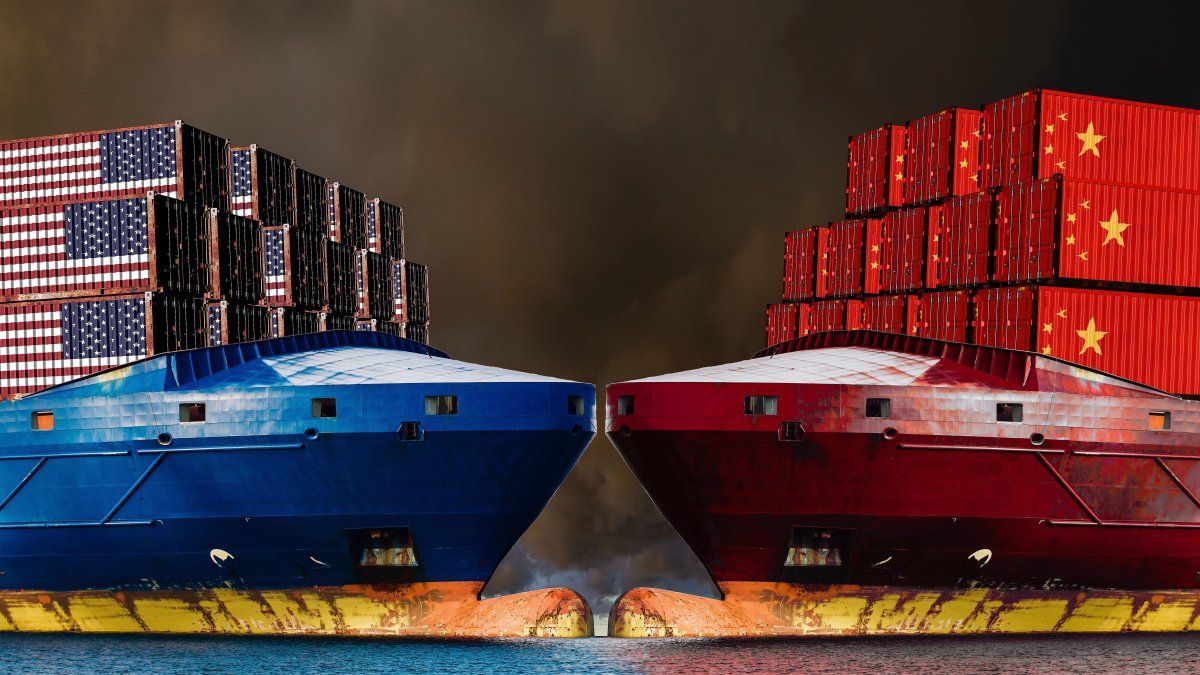Under this context, the industries of the country of Xi Jinpingwhich are restricted to access to the North American market, They begin to redirect their offer to Latin America. As Argentina It is no exception, for national business this generates a alarming contextin the middle of the low recovery of domestic consumption and an increasingly lax commercial opening.
Textiles, main affected by imports
“The Chinese are going out to compensate for the sales they lost in the US With other markets. There is a very big offer towards Argentina, ”he warns Scope Gastón Leitertextile entrepreneur, item significantly affected by the flexibility of import income.
While your company works with specific niches, such as fishing and mining, it warns that “colleagues are noticing that pressure“Since China”The market went out to eat”
The textile industry is, next to footwear, one of the most vulnerable against import shocks. “It is a very sensitive sector: intensive in labor, With few automation possibilities And that consumption is barely falls, ”explains Leiter. For the entrepreneur, the Asian oversupply can lead to a price drop, loss of participation and destruction of employment.
Metallurgy, a item that suffers from stagnation
The same happens in the Metallurgical industrywhere sector sources describe a stagnation situation: “Metallurgy consumption Since the middle of the year it was locked. There are sectors that since last year do not sell a screw, ”alerts an off voice, with weight in the field.
Likewise, the same source admits: “Many sectors were protected for years in macroeconomic instability to collect anything. But Today the discussion is on the margins: There is no rest and the competition becomes fierce. ”
Autopartes: between the loss of competitiveness and the regulatory dismantling
In the sector Autopartistthe situation follows with special attention. Pablo Ferrariowner of a factory of the field and member of AFAC (Association of Argentine Component Factories), describes how the consumption crisis in the US generated distortions in the value chain: “Our main silicone provider in China warned us that Many factories closed and those that remain are signing To regulate the international price. The ton went from US $ 1.60 au $ 2,20 ”, exemplifies the interviewee.
That uphill pressure in inputs is combined with flexibility in import controls.
Ferrari details that “He separated the Inti of the self -speaking certification process, ”allowing to import with fewer requirements.”Today is more imported, with fewer controls”, Highlights the SME businessman.
At the same time, he warns that “It is very difficult to monitor import numbers“Because everything is measured by tariff position, and that does not reflect the complexity of the sector.
In turn, Ferrari also indicates a trend at the regional level: “Companies like Autozone They are quoting suppliers in South America To replace the Chinese, but China does not want to lose market. What we see is that many girl companies are closing because their main client was the US ”
The most imported auto parts for 2025
The AFAC manages to put in quantities the increase in imports of auto parts, especially from China and Brazil.
Faced with the consultation of this medium, AFAC replies that During the first semester of 2025 Imports showed a marked increase in volume compared to the same period of the previous year.
Among the fastest growing products are the Fuel pumpswhose imported amount practically doubled, with a jump of 99.6%. The ones also stood out shock absorberswith a rise of 67.5%driven by both terminals and the rest of the sector.
The together They also showed a significant increase, with a positive variation of 20.7%while the spark plug cables grew a 2.5%.
Meanwhile, the bumper They increased a 10.9% in imported quantity, while batteries They grew a 26.7%and the Glass a 15.6%.
This complex scenario will be the backdrop of the AutoPartes Replacement Congressthat the August 19 in Parque Norte.
Start over: the auto -party event key
Directed by AFAC, the event will bring together businessmen, analysts and technicians Around the challenges of the sector: from the value chain to the behavior of the consumer, through the advance of artificial intelligence and updated information of the automotive park.
But the most important data is contributed by the closure: the event will conclude with a talk about resiliencein charge of a neuropsychologist of the INECO INSTITUTEdirected by Facundo Manes.
“Given the changes that the sector is going through in the midst of an increasingly complicated situation, where the technological advance and the opening of imports raise greater challengesWe need better adaptation capacity and want to end an optimistic message, ”they explain from the organization.
Alliance with China: strategy or threat?
Mauro GonzálezPresident of the General SME Confederationput the focus on the political and strategic background of the link with China. “It is very important to have clear the consideration in economic and financial matters. Without a coherent articulation between the government and the business sector, either of the two possible scenarios will be catastrophic. ”
González highlights that, without an industrial development policy with an aggregate of genuine value and technological transfer, “Neither job creation nor investment attraction will be promoted”
For its part, the reverse example is provided by the businessman dedicated to packaging Sergio Munnewho highlights a positive opportunity arising from the technological war: “The United States took the manufacture of the Apple line to a Chinese company with 30,000 employees, and that production was distributed in Mexico, Brazil, the United States and Argentina. ”
Munne highlights the case of Pixarta company based in Escobar that manufactures electronic components for US companies, and that “competes internationally with lower carbon footprint than Tierra del Fuego.”
Meanwhile, Argentina is not left out of the effects of the Asian giant positioning as the main partner in the bilateral trade of each country worldwide.
The relationship with China, more and more deficient
According to data from the Chamber of Exporters of the Argentine Republic (Wax), the relationship between the two countries shows an increasing deficit for Argentina:
• Exports:
– U $ S 823 million in May 2025 (-16% year-on-year).
– U $ S 2,188 Millions in January-May 2025 (-14.4% year-on-year).
• Imports:
– US $ 1,246 million in May 2025 (+62.4% year -on -year).
– U $ S 7,006 million in January-May 2025 (+77.2% year-on-year).
• Commercial balance:
– Deficit for Argentina of -U $ S 422 Millions in May 2025, the second largest negative balance with a country in the month after Brazil.
– Deficit for Argentina of -U $ S 4,817 Millions in the first 2025 semester, the largest negative balance with a country in the period.
• Stake:
– In the same period, China was the second business partner from Argentina after Brazil.
– In turn, China was The fourth destination of exports Argentinas (6.7% of the total) and The second origin of imports (22.9%).
Source: Ambito




